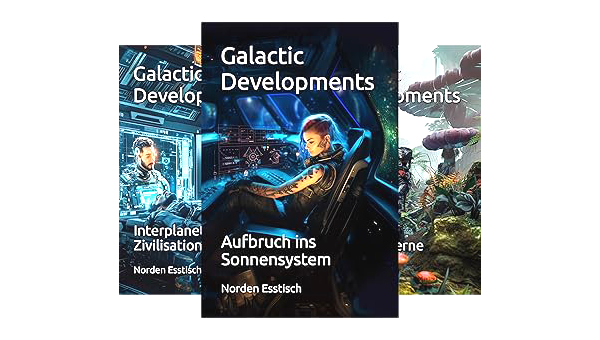
2115 Boom der Life-Themes

-- Ad --
Du wolltest schon immer mal auf die Seychellen, hast aber kein Geld. Besorg dir einfach ein Life-Theme. Ist viel billiger als echt verreisen. Und spart Zeit. Das Life-Theme Seychelles 24/7 von Dream Theatre/Mumbai zeigt dir die Welt, wie sie nicht ist.
--
Life-Themes verändern die optoakustische Wahrnehmung. Sie lassen die Welt anders aussehen als sie eigentlich ist. Neuroimplantate verändern die Signale der Sinnesnerven von Augen und Ohren. Man läuft durch die reale Welt. Man sieht die reale Welt. Aber das Aussehen aller Dinge wird in Echtzeit an das gewünschte Genre oder Theme angepasst.
Wer in einer Großstadt wohnt, aber lieber auf einer tropischen Insel leben würde, kann sich alles in der Optik einer Südseeinsel darstellen lassen. Straßenlaternen werden zu Palmen, weiter entfernte Häuser werden durch Felsklippen ersetzt. Die Sonne strahlt immer von einem blauen Himmel.
Wer im Mittelalter leben will, kann sich ein Theme aus einer riesigen Sammlung von Mittelalter-Themes aussuchen. Häuser bekommen Zinnen, Beton wird zu Backstein, Fahrzeuge werden Kutschen und sogar Personencopter werden in große Vögel oder Drachen übersetzt.
Der Trend zu Life-Themes hat viele Vorläufer. Immer mehr Menschen erleben die Realität angepasst an ihre Vorstellungen. Schon länger ändern Neuroimplantate die Wahrnehmung durch Ausblendung ungewünschter Dinge und Einblendung zusätzlicher Information.
Werbeblocker entfernen Werbebotschaften aus dem retinalen Datenstrom, bevor die Nervensignale die Verarbeitung im Gehirn erreichen. Virtags zeigen als eine Art Head-up Display virtuelle Anmerkungen, Hinweise und Wegweiser, die in das visuelle Zentrum eingespeist werden. Im Gaming-Bereich gibt es seit langer Zeit Real-Plays, die Fortsetzung von 3D VR-Technologien in der realen Welt. Games zeigen ihre Objekte als Ebene über der Realität.
Eine der ersten Anwendungen von sensorischen Neuroimplantaten waren Assistenten, die die Umgebung analysieren und in Echtzeit Ratschläge geben, wie zum Beispiel Daten, Diskussionsargumente oder Verhaltensanleitungen. Berüchtigt ist die Klasse der Wingman Flirt-Assistenten, die biometrische Daten des Gegenübers analysieren und statistische oder profilbasierte Hinweise geben. Unersetzlich sind Assistenten für Ingenieure, die Baupläne schon lang nicht mehr als Display-Sheets oder gar Papierrollen mit sich herumtragen, sondern Diagramme jederzeit über die optische Wahrnehmung einblenden können. Und inzwischen völlig selbstverständlich sind die Assistenten der Shiva-Klasse, die Hintergrundinformationen und Reputationsratings zu allen Personen bereithalten.
Es gibt auch schon länger Malware auf Implantaten, die die optoakustische Wahrnehmung manipuliert. Manche Malware blendet Werbebotschaften ein, die dann Webeblocker umgeht. Es gibt sogar Malware, die reale Ereignisse anders darstellt, um Zuschauer zu täuschen, sogenanntes Feed-Spoofing.
Ein Life-Theme ist ein Software Modul. Es wird als Plugin auf dem Neuroimplantat installiert. Gute Themes sind nicht billig. Die Analyse der Szene in Echtzeit ist aufwändig. Sie kann handelsübliche Neuroimplantate schnell überlasten. Manche Themes arbeiten deshalb mit Streaming und servergestützter Szenenanalyse. Neben dem Vertrauens-Problem (alles, was man sieht, wird in das Netz geschickt und dort analysiert) leidet vor allem die Echtzeitfähigkeit. Schon wenige Millisekunden Ping irritieren. Deshalb muss die Szene eigentlich lokal analysiert werden. Das setzt gute (teure) Algorithmen und aktuelle (teure) Hardware voraus. Außerdem enthalten Themes Transformationsbibliotheken, Grafikroutinen und Grafikdaten, die je nach Preis von sehr unterschiedlicher Qualität und Vielfalt sein können.
Um die Life-Themes herum entsteht eine riesige Ökonomie. Es gibt in jedem Genre viele Varianten und viele Hersteller. Ob Mittelalter, Fantasy, Steam-Punk oder Science-Fiction. Beliebte Genres haben hunderte Themes und tausende Mods, Hacks und Add-ons.
Bald bringen die Unterhaltungsnetzwerke Themes ihrer IPs heraus mit denen sich Fans in den Welten ihrer Lieblingsserien bewegen können. Urlaubs-Themes sind sehr beliebt, wie auch viele andere Realwelt-Themes, die einfach nur eine andere (aber reale) Umgebung vorspielen – Städtereisen im Alltag. Einige Overlays sind vor allem jahreszeitabhängig beliebt, wie zum Beispiel das Add-on Frau Holle der Wetterwarte Zugspitze. Das Add-on zaubert auf alles eine Lage Neuschnee in einstellbarer Höhe.
Eine nette Spielerei sind Render-Themes, die keine Objekte verändern, sondern nur die Optik anpassen, zum Beispiel als Fresko oder als Strichzeichnung, wie das berühmte Open-Source Theme A-ha. Comic-Themes zeigen nicht nur die Welt im Comic-Stil, sondern sie blenden auch Sprechblasen und animierte Textfelder ein. Dafür unterdrückt das Audio-Implantat Sprache und Umgebungsgeräusche.
Es gibt für fast alle Produkte Upgrades und Mods. Es gibt offene und proprietäre Schnittstellen, durch die sich Plugins in die Verarbeitungspipeline einhängen können, um einzelne Schritte zu verbessern. Life-Themes haben Schnittstellen zu Werbeblockern, Assistenten und all den anderen Anwendungen auf Neuroimplantaten, die inzwischen unverzichtbar geworden sind und natürlich auch im gewählten Theme dargestellt werden sollen.
Mehr Kultur
2078 Neueste Forschung
2090 Adaptive Zusammenfassung
2115 Neuroimplantate
2128 Kinder Gen-Baukasten
2165 Yksityiskohta World Jam
2168 Spaceship Udyama
2231 Vereinte Planeten
2234 Am Ende des Orbits
2326 Kein interplanetarer Krieg
2343 0G-Spiele
2369 Mabesi-Krise
2445 Scum-Festival
2625 Alien-Tiere kommen zu uns
2664 Die Geschichte der Galaxis
2693 Reisen unter fremden Sonnen
2721 Spacedom-Tragödie
2750 VR-Drama Executive Decision
3050 Königliche Garde
3090 Solo Ehre
3131 Roboter und Drachen
3300 Begriffsveränderung
3353 Tor der Kontroverse
Neue Beiträge
2158 Space Patrol
2222 Weltraumpiraten
2326 Kein interplanetarer Krieg
3050 Königliche Garde
3090 Solo Ehre
2234 Am Ende des Orbits
2248 Gemini-Katastrophe
2366 Orbitale Ökonomie
2312 Kaio-Artefakt
3361 Erste Menschheit
2333 Metrische Impulsverstärkung
2337 Verschwörung im Orbit
2247 Quantensprung
2284 Trennung der Erde
2321 Isolation der Erde
2205 Unternehmensnationen
2192 Antiexpansionistischer Terror
2179 Private Asteroidenbasis
2231 Vereinte Planeten
2291 Verbotene Forschung
Die Besten
(20 von 75)
2091 Baum des Lebens
2205 Unternehmensnationen
2234 Am Ende des Orbits
2247 Quantensprung
2248 Gemini-Katastrophe
2321 Isolation der Erde
2326 Kein interplanetarer Krieg
2337 Verschwörung im Orbit
2445 Scum-Festival
2518 Geheime interstellare Mission
2544 Nachricht des Jahrhunderts
2668 Ultrametalle
2750 VR-Drama Executive Decision
2776 Höhlensysteme
2786 Nette Aliens
2969 1000 Jahre Mondlandung
3190 Überraschungsangriff
3191 Umzug nach Cobol
3245 Sterge-Blockade
3308 Supernova
 2101
Smart Fusion
2101
Smart Fusion

 2128
Kinder Gen-Baukasten
2128
Kinder Gen-Baukasten